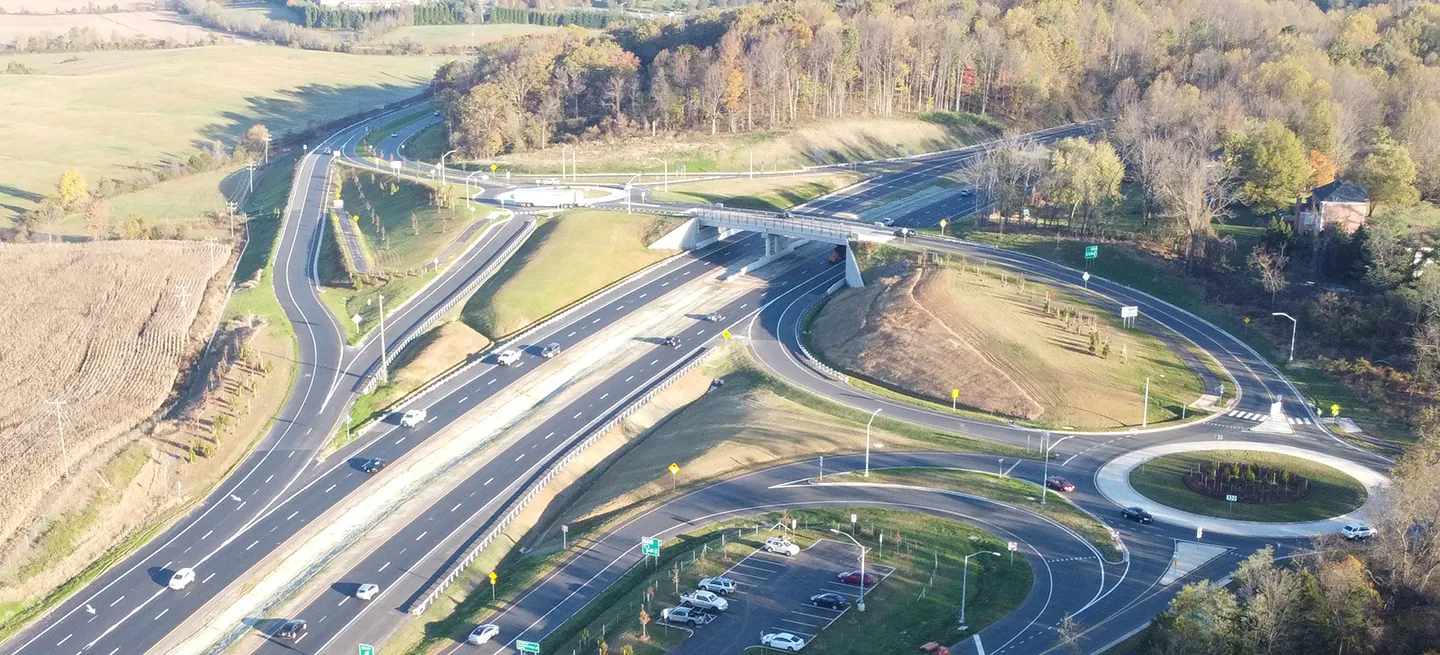Building information modeling (BIM) continues to be an effective way to create, manage, and share multidisciplinary digital asset data across the life cycle of a project, from planning and design to construction and operations. BIM offers many applications across the AEC industry. The software developer Autodesk reports that by 2024, the percentage of architects and engineers using BIM for more than half of their projects is forecasted to reach 89% and 80% respectively.
There are multiple BIM processes used by engineers every day. These technologies support project delivery, iterative design, community engagement, construction administration, and streamlined information management. Software applications used to facilitate project delivery are often designated by the client, following defined expectations.
Our team had the opportunity to apply BIM’s 3D technologies on the Warrenton Southern Interchange design in Fauquier County, Virginia. The previously signalized intersection at U.S. Route 15/17/29 and Business U.S. Route 15/17/29 experienced a high volume of crashes, caused traffic delays for the growing community, and did not provide accommodations for pedestrian or bicycle traffic. The Virginia Department of Transportation (VDOT) selected our team to design and construct a solution that would alleviate the congestion and safety concerns.
 Warrenton Southern Interchange in Fauquier County, Virginia. Photo credit: Shirley Contracting Company, LLC.
Warrenton Southern Interchange in Fauquier County, Virginia. Photo credit: Shirley Contracting Company, LLC.
The software developer Autodesk reports that by 2024, the percentage of architects and engineers using BIM for more than half of their projects is forecasted to reach 89% and 80% respectively."
Carl Kaczmarek III
Southern Warrenton Interchange 3D Modeling
Our design team used Bentley’s OpenRoads technology for the project, which allowed for real-world contextualization of the project site and 3D modeling. The software was used to develop a 3D design for plan production and the construction of the project. Our team also harnessed its capabilities during the design-build procurement, which helped us to quickly explore alternatives that led to a lower project cost for VDOT. These savings resulted in a funding surplus, allowing for contract options to be added, ultimately benefiting the end users. The 3D workflows also supported the rapid development of project construction limits and material quantity estimates for the subcontractor in early phases, and later analyzed a multi-stage traffic control diversion with grade changes of up to 30 feet.
The design team achieved plan approval within 12 months of notice to proceed, including two months of field investigations prior to design activities. This success continued through construction as the team received VDOT’s highest Construction Quality Control Program score at the time, and a Design-Builder Performance Evaluation of four out of five. Our team’s effective use of the BIM processes was a significant reason for our efficiency and overall success on the project.
Supporting the 3D Task Force
Shortly after the Warrenton Southern Interchange project was complete, VDOT requested that our team participate in the Industry 3D Task Force, where our engineers gave their perspectives on Virginia’s expectations of their consultants. We were able to help define what 3D deliverables and model management will look like in Virginia for years to come.